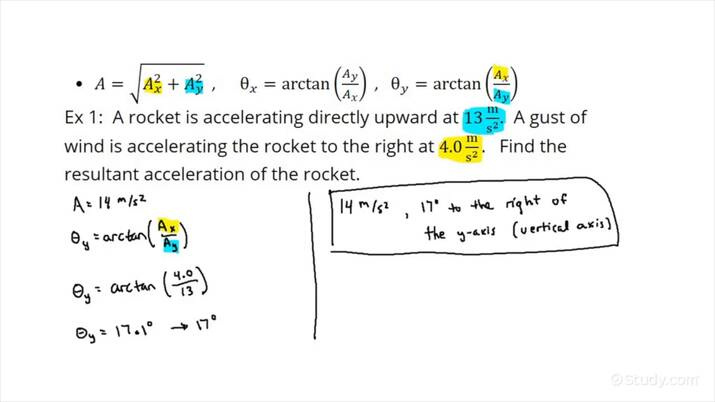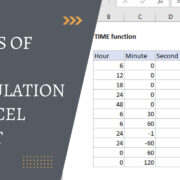Understanding the force behind moving objects is essential not just in advanced physics, but also in everyday life. Acceleration is a measure of how quickly an object changes velocity – meaning how fast or how slow it speeds up or slows down. To grasp this concept better, imagine you’re in a car; the push you feel as the car speeds up or the tug when coming to a stop – that’s all about acceleration.

Now, calculating the magnitude of acceleration is crucial for predicting and understanding motion, and it can seem intimidating at first. But fret not; we will guide you through understanding and computing this fundamental physics quantity, regardless of your technical background.
Using Basic Acceleration Formula
Acceleration is the rate at which an object’s velocity changes. To calculate the magnitude of constant acceleration, which means we assume acceleration does not change during the time considered, we can use the standard formula:
a = (vf – vi) / t
where a is acceleration, vf is final velocity, vi is initial velocity, and t is the time taken for this change.
Detailed Steps:
- Identify Initial Velocity (vi): Note down the speed of the object before the acceleration period begins.
- Determine Final Velocity (vf): Measure the speed at the end of the acceleration period.
- Calculate the Change in Velocity (Δv): Subtract the initial velocity from the final velocity (vf – vi).
- Establish the Time Frame (t): Record how long the acceleration took.
- Compute the Acceleration (a): Divide the change in velocity by the time taken to find the acceleration (a = Δv / t).
Summary
This method provides a straightforward way to determine acceleration if the object is moving in a straight line and the acceleration is constant. The simplicity here is beneficial for those new to physics. However, this formula doesn’t apply to situations with variable acceleration or when moving along a curve.
Graphing Velocity vs. Time
Sometimes you might have a velocity-time graph available from which you can calculate the magnitude of acceleration.
Detailed Steps:
- Plot or Analyze the Graph: If provided, study the velocity-time graph for the object’s motion.
- Identify the Slope: Acceleration corresponds to the slope of the line on this graph.
- Calculate the Slope: This is the ‘rise over run’. For a straight line, subtract the initial velocity from the final velocity for the rise and divide it by the time for the run.
- Determine the Acceleration: The slope value equates to the acceleration of the object.
Summary
This graphical method is advantageous because it allows for visual understanding, and it works well if you have variable acceleration since the slope can change over different intervals. Conversely, it requires an accurate graph and understanding of how to interpret slopes, which may be challenging for some learners.
Using Accelerometers
An accelerometer is a device that measures the acceleration of an object. It’s commonly found in smartphones and gaming controllers.
Detailed Steps:
- Set up the Accelerometer: Attach it to the object whose acceleration you want to measure.
- Begin Measurement: Start the device as the object moves to record the acceleration data.
- Read the Data: Once the movement period is over, check the accelerometer for the readings.
Summary
Using accelerometers is excellent for real-time applications and dynamic situations where acceleration changes. The tool’s precision offers valuable insights, but it may not be accessible to all and often requires additional knowledge on data interpretation for extensive analysis.
Applying Newton’s Second Law
Newton’s Second Law states that force equals mass times acceleration (F = ma). You can rearrange this to solve for acceleration if you know the force and mass.
Detailed Steps:
- Determine the Net Force (F): Calculate or measure the net force applied to the object.
- Identify the Mass (m): Find the mass of the object receiving the force.
- Rearrange the Formula: To solve for acceleration (a), the formula becomes a = F / m.
- Calculate Acceleration: Divide the net force by the mass to find the acceleration.
Summary
This approach is particularly beneficial when dealing with scenarios involving different forces. It highlights the relationship between force, mass, and acceleration. A limitation is that it assumes a net force calculation is available and requires accurate mass measurement.
Using Kinematic Equations
For uniformly accelerated motion, there are a set of kinematic equations that relate displacement, initial velocity, final velocity, acceleration, and time.
Detailed Steps:
- Identify Known Values: Establish the variables you have, like initial velocity, time, displacement, etc.
- Select the Appropriate Equation: Choose the kinematic equation that includes your known values and solves for acceleration.
- Rearrange and Solve: Solve the equation algebraically to find the acceleration.
Summary
Kinematic equations provide a robust framework for problems involving constant acceleration. They are versatile for various motion scenarios but require an understanding of algebraic manipulation and knowing which equation to use in a given situation.
Tips and Tricks
Estimating Acceleration
If exact values are difficult to obtain, estimate the acceleration using approximations of velocity and time. This isn’t precise but offers a general understanding of the concept.
Understanding Direction
Acceleration is a vector, which means it has both magnitude and direction. If an object slows down, the acceleration is in the opposite direction of motion.
Constant Acceleration Assumption
Many calculations simplify to assuming constant acceleration. Be aware that in the real world, few situations involve perfectly constant acceleration.
Using Technology
Many smartphones and apps now include sensor technology that can measure acceleration in some capacity, providing an accessible way to engage with the concept.
Safety First
When measuring acceleration through experiments, always prioritize safety, especially if high speeds or forces are involved.
In conclusion, calculating the magnitude of acceleration may seem daunting at first, but it is an accessible concept once broken down into manageable steps. From basic formulas to modern technology, various methods provide the means to understand this critical aspect of motion. While each approach comes with benefits, they also carry potential downsides; having a grasp of various methods can help in choosing the most appropriate one for a given situation.
FAQs:
Q: Can I calculate acceleration without knowing the time?
A: Yes, if you have other information such as displacement and initial and final velocities, you can use kinematic equations which do not require time.
Q: Is it possible to measure acceleration on a curved path?
A: Yes, but the calculations become more complex as you have to take into account the change in direction, and you’ll often need to resolve the acceleration into its components.
Q: Can I calculate the magnitude of acceleration from a distance-time graph?
A: No, acceleration is the change in velocity over time; hence, a velocity-time graph is required. However, you can derive velocity from a distance-time graph if acceleration is constant.









